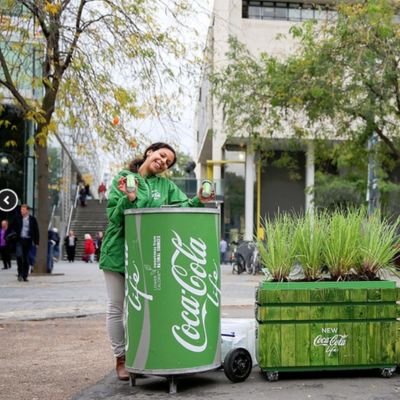What types of materials are commonly used in exhibition displays?

Exploring the Diverse Materials in Exhibition Displays: From Fabric to Sustainable Options
In the realm of exhibition displays, materials play a pivotal role in shaping the aesthetics, functionality, and sustainability of the presentation. From capturing attention to conveying brand identity, the choice of materials influences the overall impact of the display. In this comprehensive guide, we delve into the various types of materials commonly used in exhibition displays, ranging from traditional favourites like fabric and metal to innovative sustainable options. Whether driven by design preferences or budget constraints, understanding these materials can help exhibitors make informed decisions to create compelling displays that resonate with their audience.
Fabric: Versatile and Vibrant
Fabric has long been a staple in exhibition displays due to its versatility and vibrant appeal. From banners and backdrops to table covers and hanging signs, fabric offers a myriad of possibilities for creating visually striking displays. Polyester, nylon, and cotton are among the commonly used fabrics, each offering unique characteristics such as durability, wrinkle-resistance, and vibrant colour saturation.
One of the key advantages of fabric displays is their lightweight and portable nature, making them ideal for trade shows and events where ease of setup and transport is crucial. Additionally, fabric displays are often machine washable, allowing for easy maintenance and reuse, thus contributing to sustainability efforts.
Metal: Sturdy and Sleek
For exhibitors seeking a more industrial and modern aesthetic, metal is a popular choice for structural elements and signage within exhibition displays. Aluminium, steel, and stainless steel are commonly used metals, prized for their durability, strength, and sleek appearance.
Metal displays offer excellent stability, making them suitable for supporting heavy graphics or equipment. Moreover, metal can be easily shaped and customised to fit specific design requirements, allowing for creative freedom in display construction. While metal displays may be pricier than fabric counterparts, their longevity and ability to withstand wear and tear make them a worthwhile investment for exhibitors looking for long-term solutions.
Acrylic: Transparent Elegance Metal: Sturdy and Sleek
Acrylic, also known as Plexiglass or Perspex, is a transparent thermoplastic often used in exhibition displays for its modern and elegant aesthetic. From signage and display cases to product stands and brochure holders, acrylic adds a touch of sophistication to any exhibit.
One of the key advantages of acrylic is its clarity, which allows for excellent visibility of graphics and products without distortion. Additionally, acrylic is lightweight yet durable, making it easy to transport and resistant to breakage. Exhibitors can also customise acrylic displays with various finishes and colours to match their branding and design preferences, further enhancing their visual appeal.

Sustainable Options: Eco-Friendly Innovations
In recent years, there has been a growing emphasis on sustainability in exhibition displays, driving the demand for eco-friendly materials and practices. Exhibitors are increasingly turning to sustainable options such as recycled materials, bamboo, and biodegradable substrates to minimise their environmental footprint.
Recycled cardboard and paper-based displays offer a lightweight and cost-effective alternative to traditional materials while reducing reliance on virgin resources. Bamboo displays, known for their rapid growth and renewable properties, provide a sustainable alternative to wood-based materials without sacrificing durability or aesthetics.
Furthermore, exhibitors can explore biodegradable substrates made from natural fibres such as hemp or cotton, which decompose naturally at the end of their lifecycle, minimising waste and pollution. By incorporating these sustainable options into their exhibition displays, exhibitors can demonstrate their commitment to environmental responsibility while still creating impactful presentations.
Design and Budget Considerations
The choice of materials in exhibition displays ultimately depends on a combination of design preferences, functional requirements, and budget constraints. While fabric displays offer versatility and affordability, metal and acrylic displays provide durability and a sleek aesthetic. Sustainable options, though often pricier upfront, align with eco-conscious values and contribute to long-term sustainability efforts.
Peter Fleming, a renowned expert in exhibition design, emphasises the importance of striking a balance between creativity and practicality when selecting materials for displays. According to Fleming, "Materials should not only enhance the visual impact of the display but also align with the brand identity and messaging."
In conclusion, the diverse range of materials available for exhibition displays offers exhibitors ample opportunities to create compelling presentations that captivate audiences and convey brand messages effectively. Whether opting for fabric, metal, acrylic, or sustainable options, exhibitors must consider factors such as design aesthetics, functionality, and budget to craft displays that leave a lasting impression.
By staying informed about the latest trends and innovations in materials and design, exhibitors can stay ahead of the curve and create memorable experiences that resonate with their target audience. With the right materials and strategic planning, exhibition displays can become powerful tools for showcasing products, engaging attendees, and driving business success.
In the ever-evolving landscape of exhibition design, the choice of materials remains a critical element in shaping the success of displays. By embracing innovation, sustainability, and creativity, exhibitors can unlock new possibilities and elevate their brand presence in the competitive world of trade shows and events.
If you’re wondering about the future of retail too, and considering your options then give Rich a call, 0800 10 99 88. We would love to discuss your options.
